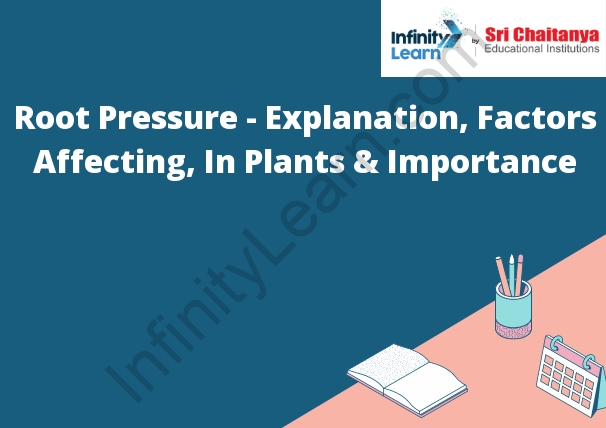Table of Contents
What is Root Pressure?
Root Pressure – Explanation: Root pressure is the pressure that the water column in the xylem creates as it is drawn up the stem and into the leaves. It is a vital force that drives the ascent of water in plants and is generated by the active transport of minerals from the roots to the leaves.

Explain Root Pressure
Root pressure the pressure exerted by the xylem sap in plants. It is generated by the active transport of water from the roots to the shoots. The pressure can be as high as 50 atmospheres.
Root Pressure in Plants
Root pressure basically, the pressure exerted by the xylem sap in plants. This sap is under high pressure because it is pushing against the resistance of the small vessels in the xylem. The sap produced in the leaves, where the water and dissolved minerals drawn in from the soil. The sap travels from the leaves to the rest of the plant, and then used to provide the plant with the water and minerals it needs to grow.
Positive Root Pressure and Negative Root Pressure
- Positive root pressure is the pressure that develops in the xylem as water is drawn upward from the roots. This pressure is due to the weight of the water column and the cohesion of water molecules.
- Negative root pressure is the pressure that develops in the xylem as water released from the leaves. This pressure is due to the weight of the water column and the adhesion of water molecules.
Factors Affecting Root Pressure
The factors affecting root pressure are:
1. The number of xylem vessels in the root
2. The water potential in the soil
3. The number of root hairs
4. The rate of water uptake by the roots
5. The water potential in the stem
6. The transpiration rate
External Factors Affecting Transpiration are as Follows:
- Temperature: The rate of transpiration increases as the temperature of the environment increases. When the temperature is high, the rate of diffusion of water vapor through the stomata is high and the rate of evaporation from the leaf surface is high.
- Humidity: The rate of transpiration decreases as the humidity of the environment increases. When the humidity is high, the rate of diffusion of water vapor through the stomata is low and the rate of evaporation from the leaf surface is low.
- Wind: The rate of transpiration increases as the wind speed increases. When the wind speed is high, the rate of diffusion of water vapor through the stomata is high and the rate of evaporation from the leaf surface is high.
- Soil Moisture: The rate of transpiration increases as the soil moisture content decreases. When the soil moisture content is high, the rate of diffusion of water vapor through the stomata is low and the rate of evaporation from the leaf surface is low.








